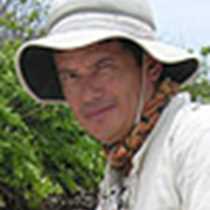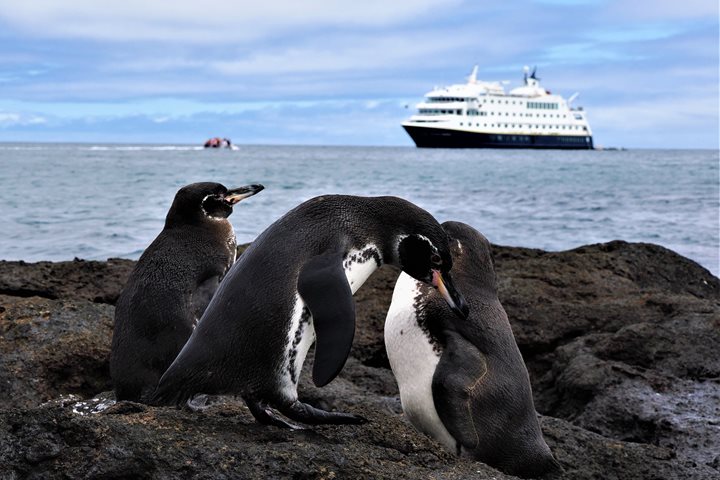Isabela is by far the largest island of Galapagos; its total area comprises fifty percent of the archipelago and many of the best visitor sites are found here. Today we visited two of the most enigmatic and famous places; the first one being an area of sea floor that was uplifted only a few years ago, while the second was a favorite refugee of pirates throughout the 1600s and 1700s.
Our day started in the Zodiacs, heading to the black beach of Urbina Bay. It was a sunny and windy day, and the seas were very calm. When we arrived to the landing area, we observed a flock of Galapagos penguins in a feeding frenzy with some flightless cormorants, who were drying their stumpy wings on the rocks. Heading inland, we crossed by a small forest of poison apple trees and observed land iguanas and juvenile giant tortoises walking freely along the lowlands, while hidden under the bushes some adults tortoises tried to prevent overheating. We observed the evidence of that incredible geological event that occurred late 1954, that uplifted more than two square kilometers of sea floor. Petrified sea worms and barnacles, huge pieces of white coral heads spread along the trail and gigantic rocks that emerged from the ocean, changed the topography and the landscape of Urbina Bay forever.
As soon we came back on board, we started our navigation to Tagus Cove. During this journey, our Expedition Leader announced that some whales had been seen near the National Geographic Endeavour, while our guests enjoyed a delicious Ecuadorian feast in the dining room, observing some sea lions and manta rays jumping in the blue ocean.
When we arrived to Tagus Cove and dropped anchor, we started kayaking along the coastline, observing some graffiti left by ancient visitors, who were trying to perpetuate the names of their boats forever. On the rocks, penguins, cormorants, sea lions and pelicans were a delightful sight to our guests, who afterwards, came back to the same place to discover the underwater world, snorkeling with sea turtles, penguins and some sea lions that tried to catch some fish.
Later, just before sunset, we disembarked on the rocky area to visit Darwin Lake. We climbed 120 wooden steps to finally observe this unique landscape, with the ocean and the lake separated by a thin wall of compacted ash, and Fernandina Island as the backdrop. During our walk uphill we observed ground finches, mockingbirds and some warblers, and when we finally arrived to the top, Darwin volcano looked gigantic, as competing in magnificence and size with Wolf and Alcedo volcanoes. The fluttering of birds and the sunset behind Fernandina Island were the announcement that we had to return to the National Geographic Endeavour, but we will always remember that today was unique in this real paradise called Galapagos.







